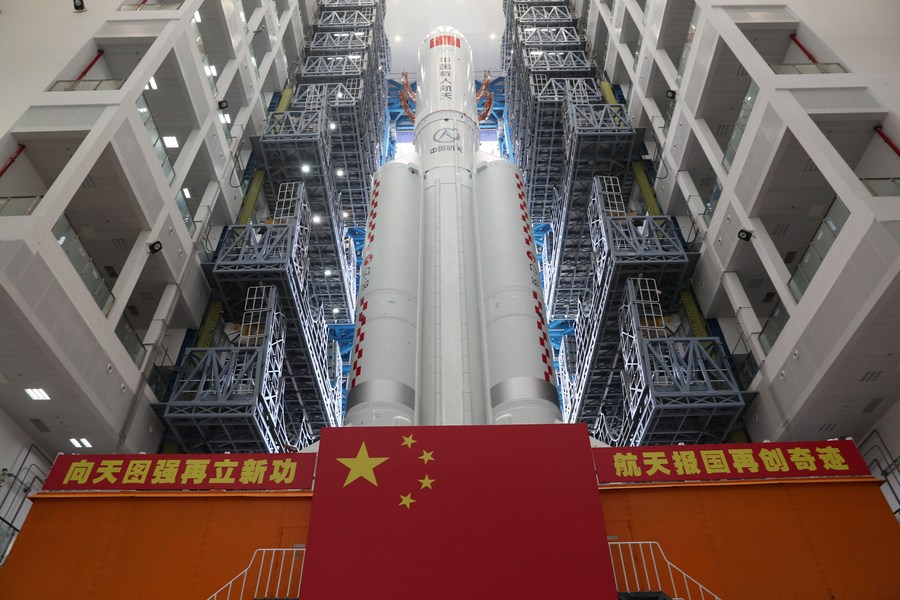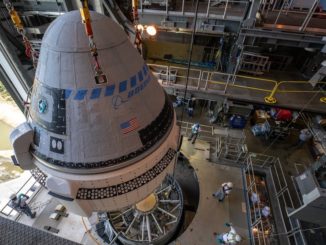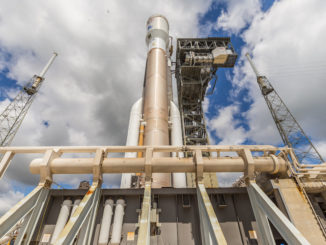
NASA Administrator Bill Nelson said Saturday that China is failing to meet “responsible standards” on space debris after a massive Long March rocket stage fell back to Earth over the Indian Ocean in an uncontrolled re-entry that is likely to be repeated with additional launches next year.
The approximately 100-fo0t-long (30-meter), 21.6-metric ton (23.8-ton) rocket booster fell out of orbit and plunged into the atmosphere late Saturday (U.S. time), according to U.S. and Chinese authorities. The rocket succumbed to aerodynamic drag and re-entered the atmosphere on a northwest-to-southeast pass over the Arabian Peninsula and Indian Ocean.
Most of the rocket was expected to burn up during re-entry. Debris that survived the scorching temperatures of re-entry likely fell in the Indian Ocean near the Maldives, according to the China Manned Space Engineering Office.
The rocket dropped into the atmosphere at nearly 17,000 mph (28,000 kilometers per hour). Friction generated from the rocket encountering air molecules caused temperatures to build up to thousands of degrees.
The Aerospace Corp., a California-based research center, expected about five to ten metric tons of material from the rocket to survive re-entry and reach Earth’s surface.
The Long March 5B rocket stage launched April 28 with the Tianhe core module for China’s space station. Rather than executing a controlled deorbit burn, the core stage remained in a low-altitude orbit after deploying the Tianhe space station module.
Atmospheric drag gradually pulled the huge rocket back to Earth, resulting in the unguided re-entry late Saturday. The rocket could have fallen anywhere moon Earth between 41.5 degrees north and south latitude, an area roughly bounded by New York City and Chicago in the north, and Wellington, New Zealand, in the south.
Although the falling rocket debris was unlikely to harm anyone, the small risk of danger captured worldwide attention. U.S., Russian, and European space surveillance authorities tracked the rocket and issued regularly-updated predictions of when and where the core stage might re-enter the atmosphere.
NASA Administrator Bill Nelson, who was sworn in as the space agency’s head last week, criticized China for leaving the rocket to make an uncontrolled re-entry.
“Spacefaring nations must minimize the risks to people and property on Earth of re-entries of space objects and maximize transparency regarding those operations,” Nelson said in a statement. “It is clear that China is failing to meet responsible standards regarding their space debris.
“It is critical that China and all spacefaring nations and commercial entities act responsibly and transparently in space to ensure the safety, stability, security, and long-term sustainability of outer space activities,” Nelson said.
The unusual design Long March 5B rocket uses a large core stage with two main engines fed by liquid hydrogen and liquid oxygen propellants. Four smaller strap-on boosters, each powered by a pair of kerosene-fueled engines, give the rocket an extra burst of energy off the launch pad.
Most rockets have first stage boosters that do not reach orbital velocity. Those rocket stages fall downrange or perform controlled landings to be reused again, leaving an upper stage to finish the task of placing satellites into orbit.
In many cases, U.S., Russian, and European rockets deorbit their upper stages to re-enter the atmosphere over a remote part of the ocean. Chinese rockets typically leave their upper stages in orbit.
What’s different about the Long March 5B is the rocket’s massive core stage, which is tied as the fourth-most massive object to ever re-enter the atmosphere in an uncontrolled manner, according to a list maintained by Jonathan McDowell, an astronomer and expert on spaceflight activity.
Wang Wenbin, a spokesperson for the Chinese Foreign Ministry, said in a press conference Friday that it is “common practice” for upper stages of rockets to burn up while re-entering the atmosphere. He later incorrectly referred to the Long March 5B rocket body as an upper stage, and said that “most of its parts will burn up upon re-entry, making the likelihood of damage to aviation or ground facilities and activities extremely low.”
But no other launcher in the world leaves such a massive component to fall back to Earth in an uncontrolled manner. Dead satellites and old rocket stages regularly re-enter the atmosphere, but re-entering objects with masses of more than a few tons are rare.
“Controlled re-entries, particularly for a large object, require considerable planning and will have a significant impact on the design and payload capacity of the stage,” wrote Marlon Sorge, principal engineer at the Aerospace Corp.’s Center for Orbital and Re-entry Debris Studies. “Nevertheless, this is a preferred approach in international standards and is rapidly becoming a global norm.”
The first launch of a Long March 5B rocket in May 2020 resulted in an uncontrolled re-entry of its large core stage over the North Atlantic Ocean. The event spread debris over the Ivory Coast.
Two more Long March 5B rockets are set to launch new modules next year to assemble China’s space station. Unless China changes the design of the rocket’s core stage, there will be more uncontrolled rocket re-entry events after those missions.
Email the author.
Follow Stephen Clark on Twitter: @StephenClark1.



